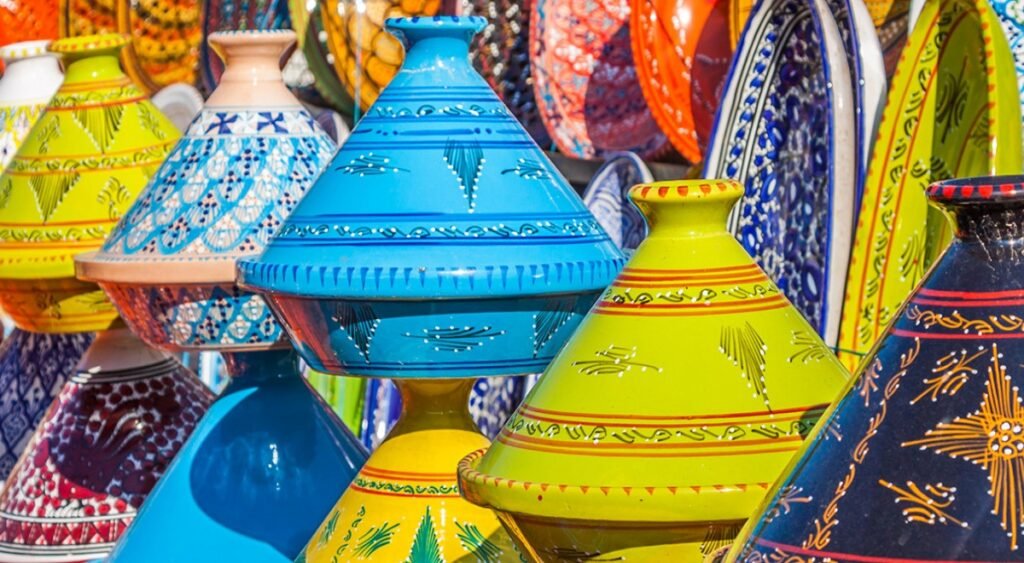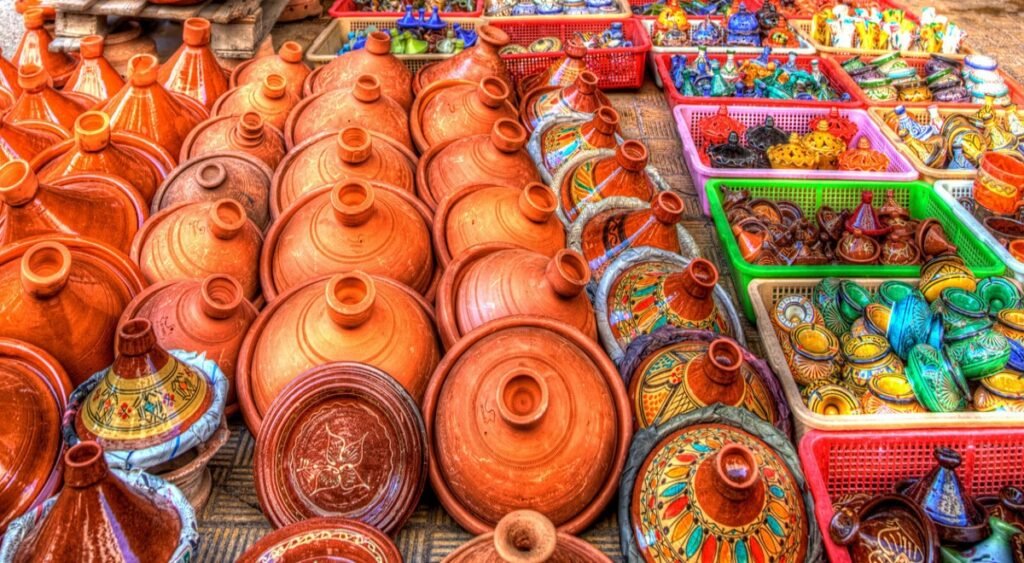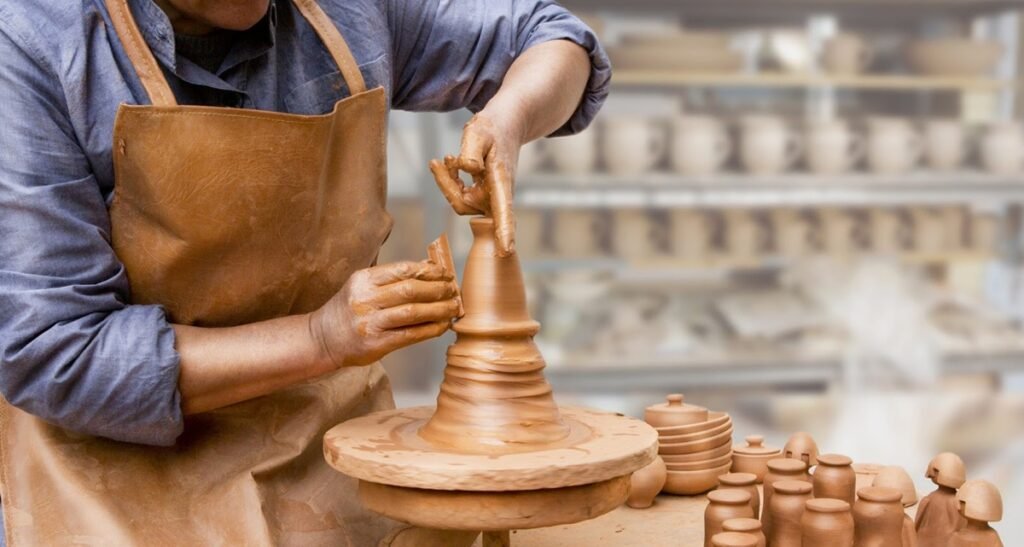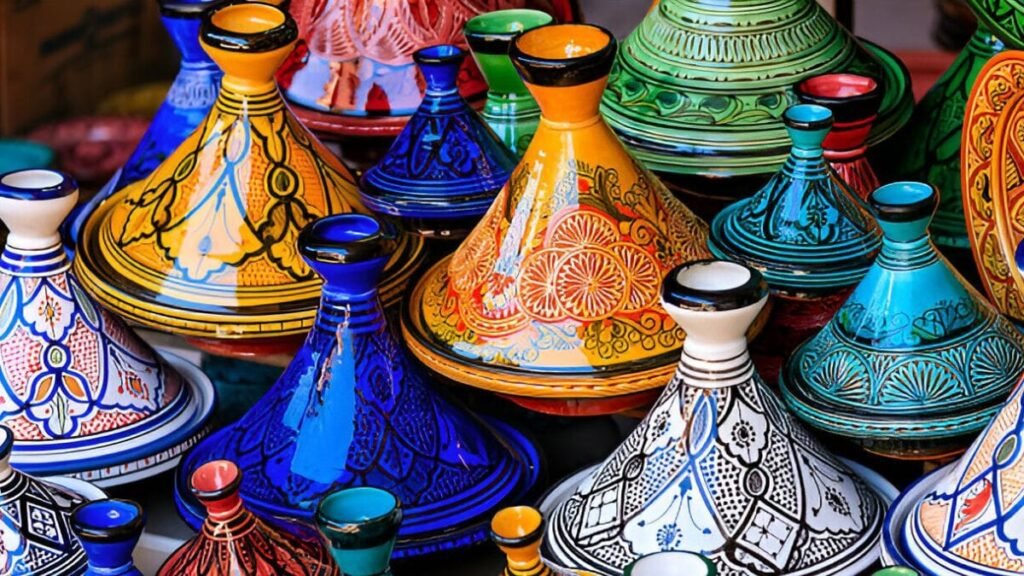Moroccan pottery: a clay memory pulsating with creativity

Moroccan pottery is one of the most prominent manifestations of Morocco's craftsmanship and cultural identity. It is not merely a traditional craft, but rather a venerable art that combines aesthetic and practical functions, reflecting the depth of cultural accumulation that has shaped the country over the centuries, from Amazigh and Andalusian influences to Arab and Islamic influences. What distinguishes Moroccan pottery is its diversity from one region to another, as each city has its own distinctive signature in colors, shapes, and motifs.
historical roots
Morocco has known pottery making since prehistoric times, with traces of clay vessels used for storage and cooking found. With the succession of civilizations, this art evolved to become more refined and creative. Moroccan pottery was influenced by the simple Amazigh spirit and elegant Andalusian motifs, as well as the Arab-Islamic character, which gave it a spiritual and symbolic touch.
Geographical and symbolic diversity

Each Moroccan city has its own unique style of pottery and ceramics making:
FezIt is famous for its blue ceramics with geometric and plant motifs inspired by zellige art.
MarrakeshIt is famous for its unique production of various pottery vessels and artifacts, and is known for its attractive engravings and colors.
AsfiKnown as the pottery capital of Morocco, it is distinguished by its yellow, red, and orange-colored products, which are displayed at international festivals and exhibitions.
MeknesIt is associated with the color green, which symbolizes fertility and renewal.
SaléIt houses the Al Walaja Centre, a craft complex that serves as an open school for preserving and developing this heritage.
This geographical distribution has made Moroccan pottery a mosaic that reflects the country's cultural and historical richness.
Cultural system and social interactions

Moroccan pottery is not merely an aesthetic form; it carries symbolic meanings and cultural significance. Many of the patterns and motifs used in pottery carry deep connections to Moroccan traditions and beliefs. It is not merely a household item; it has played a symbolic role in Moroccan life. Some pieces were associated with social occasions such as marriage and childbirth, while others were used in religious rituals or as an expression of social status. It has also remained alive in the collective imagination as a craft passed down from generation to generation.
Economic perspective
Today, Moroccan pottery has transcended its traditional boundaries to become an economic lever. The craft industry employs thousands of artisans and contributes to attracting tourists seeking authentic pieces of art. Ceramic and pottery exports are among the products that market Morocco abroad as a country that combines authenticity and creativity.
Contemporary Bets

Despite this wealth, the pottery industry faces various challenges, including:
- Competition with imported industrial products.
- Some generations have lost interest in handicrafts.
- Weak support for developing infrastructure for craftsmen.
However, there are government and private initiatives to modernize the sector and provide vocational training for young craftsmen.
conclusion
Moroccan pottery is not just clay shaped by hand; it is an identity told through colors and shapes. It is a living cultural record that links the past to the present and holds great potential for the future if employed within a comprehensive vision to protect heritage and develop it economically. In this sense, Moroccan pottery remains a mirror that reflects the genius of Moroccans and their ability to transform clay into timeless art.





